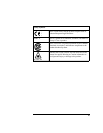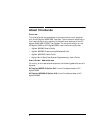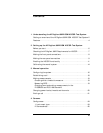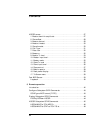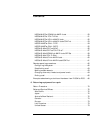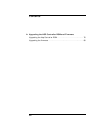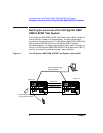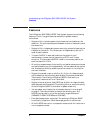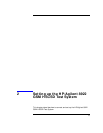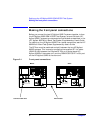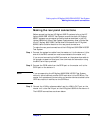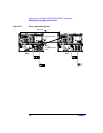
Chapter 1 3
Understanding the HP/Agilent 8922 GSM HSCSD Test System
Getting an overview of the HP/Agilent 8922 GSM HSCSD Test System
The HP/Agilent 8922 GSM HSCSD Test System is used either as a
stand-alone instrument controlled manually via the front panel user
interface, or as part of an automated test system controlled remotely
over the GPIB bus using a PC or workstation. Note that manual and
remote operation are not possible simultaneously.
The HP/Agilent 8922 GSM HSCSD Test System provides one
configuration consisting of two uplink and two downlink timeslots (2x2)
or two downlink and one uplink timeslot (2x1). Data rates of 9.6 and 14.4
kbit/s on each timeslot are supported. The timeslots used are always
adjacent, with the master channel in the first of these slots. You are able
to independently change the uplink and downlink power levels on the
two downlink timeslots and make measurements on either timeslot as
required.
Note that the system does not perform any data channel decoding on the
uplinks and only provides pre-coded data on the downlinks. The current
system only allows transparent data links, which means that the RLP
data layer is not supported.
Operating modes The master unit operates in Active Cell Mode and is responsible for all
protocol messages. The mobile must therefore camp to the master unit,
establish the call to it and receive channel assignment commands from it
etc.
The slave unit operates in Test Mode. It generates a second downlink
TCH and can analyze a second uplink TCH (if it exists). The slave unit
remains in synchronization with the master unit at all times.
The BCH of the slave unit includes information to prevent the mobile
from camping to the slave, thus ensuring that the mobile camps to the
master unit. To discourage unsynchronised operation, the slave unit does
not generate a downlink TCH unless it has received a reset signal from
the master unit.



